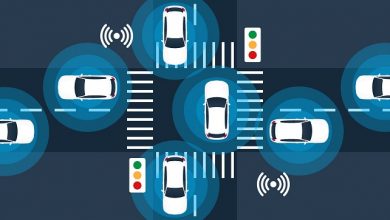Ixonos explains the "Hybrid approach for creating in-car infotainment solutions"
“What I see is a clear need for just a few in-car applications, which would serve many use cases and provide information from many sources through one HMI. Trends and services come and go and these ‘in-car application platforms’ must be ready to adapt and integrate new information and functions in their basic HMIs. This is how I understand a true hybrid approach.”
– Timo Salminen, Head of Automotive, Ixonos plc
During the recent months we’ve seen a significant increase in the availability of smartphone integration solutions in cars. We have MirrorLink, CarPlay and Google’s Android Auto. Some car manufacturers have also selected a smartphone integration solution that keeps them in full control of smartphone integration, such as Jaguar Land Rover’s InControl. Regardless of the solution, the trajectory is evident – apps will enter your car, whether they are provided by a smart device or the vehicle’s IVI System itself. From my view, the key question is: what is the best way to create value with in-car apps? I believe we need to break the dominating patterns and have a hybrid approach to in-car applications.
Hybrid Approach, Step 1 – Head unit or smartphones?

Nowadays, I consume music from streaming services, but I also listen to FM radio while I’m driving. For ‘my own’ music it doesn’t really matter where the actual music files are, as long as they are always available to me and do not increase my monthly phone bill. I do not need to own the music files. Same applies of course for public information, such as the news.
When I drive, I tend to rely on off-line navigation solutions. For me, it is important that the directions are available and do not depend on the mobile network or on my smartphone or any other device. For me as a driver, navigation is as critical in the vehicle as for example the climate controls and lights.
Music and news is not really personal data and basic navigation is a critical system related to driving. These kinds of functions are I would like to have in the head unit of my own car. When it comes to personal data such as user accounts, contacts, messages or agenda, I do care where that information is stored and I do want it to be safe. This is where we need to rely on personal devices, such as smartphones, wearables or glasses; because I want to be available and get information also when I am driving. I also want all this to be overly simple to use in the car. If I need to browse a hierarchical menu for a minute before I access the information I need, I usually don’t bother to do this. This is even more critical for the driving related functions! Sometimes hard keys are way better than fancy HMI’s on a big display. Usability first – this is the humble wish of consumers.
“To sum up, let’s keep the public information and critical vehicle related things in the car and not dependent on the smartphone.”
Especially in car sharing and rental cars you should really have these functions available without the need to connect any other device with the vehicle. When it comes to personal data, rely on personal devices. The concern of syncing your personal data with a rental vehicle by accident should be removed, but making it possible to enjoy a personalized driving experience also in rental cars. Who of you have thought twice when the IVI system of a rental car asks to access your phone book on your phone? I have. But I still would like to access my contacts and music streaming services as long as I know this all comes from my personal device and nothing would be stored in the car.
Hybrid Approach, Step 2 – Is it an app or a platform?
Having some apps running on head unit or a mobile device is not yet enough to be called a true hybrid solution and creating great user experience. The majority of today’s available in-car apps are unfortunately copying the smartphone apps concept. The issue here is the difference in the user’s environment. People use their smartphones with one or usually two hands while their eyes are locked on the smartphone screen. The phone lies steadily in their hand, usually without shaking much, so you can make very precise gestures to control the smartphone. Switching from application to another is done quickly. All your focus is on the smartphone. This is also how smartphone apps are designed to be used. They do not account for situations when the focus is on driving and you can’t stare your gadget, when the car causes some vibration and making operating a touch screen difficult or operating the app with a rotary knob. Still, we see the infotainment industry copying too much from mobile devices into the cars. Sure, the HMI’s of current in-car apps are much more driver friendly than the mobile versions, but does the whole idea of tens of apps bring the best value for the drivers? No. Forget the model of having one app for one use case and think wider.
In cars, we need to make it super easy and convenient for the driver (those not driving, can use their smart devices as usual)) to access the desired information and perform functions. This can be achieved by creating new kinds of in-car applications, which combine information of different sources under one HMI. For example, why do we need to have a separate media player for our iPods, smartphones, CD/DVDs, SD Cards or HDDs? Why do we need separate applications for Glympse, fuel prices, parking information, locating my friends etc. when this all could be available on a one single map? Why do we need to switch between different applications just to hear the latest messages, tweets, feeds or posts from our loved ones?
This brings us to the question, whether future in-car apps are really apps as we understand them? Or will they closer to a platform? Perhaps a mindset change is needed. Our industry needs to fulfill the driver’s needs for infotainment in a way that increases significantly the user experience and safety. In many of the conferences I have been to, people have questioned e.g. the need for using Facebook while driving. Yet, Facebook is one of the most used applications in cars globally! The problem to be solved is how to fulfill this need in a safe and more convenient way; one that does not require pulling your phone out of your pocket while you are driving. What I see is a clear need for just a few in-car applications, which would serve many use cases and provide information from many sources through one HMI. Trends and services come and go and these ‘in-car application platforms’ must be ready to adapt and integrate new information and functions in their basic HMIs. This is how I understand a true hybrid approach.
Hybrid Approach, Step 3 – What really matters?
All of us human are different. I happen to be a believer of personalized driving and infotainment experience. I sometimes drive very long distances and sometimes I just to the gym. Sometimes I drive with my family, sometimes alone. In Finland, I hardly end-up in a traffic jam. In Germany it is not at all unusual. The different situations and trips create different needs and expectations. As a driver and consumer, I have different key values for each situation. In the end, what really matters in in-car applications is value; the value for the driver as well as value for the stakeholders like car OEMs, retailers and service providers.
If an in-car app or one of its functions does not providing a good user experience and fulfilling the consumer need, it will not be used. I for example, configured in my current car’s news reader an RSS feed to retrieve news from Finland in English. The reason is that the car’s text-to-speech engine supports English. It would be fine for me, but there are two things that prevent me of using this in my car. First, it takes too much time and too many clicks to reach the function. Second, the text-to-speech quality is not good enough. In principle the feature is nice to have, but delivered with a bad experience it brings no value for me as the driver.
What I would like is to have personalized information consisting of news, messages, tweets and feeds available within one HMI with a Media Player kind of experience. I would also like to have Glympse integrated into my map so that I can send a Glympse to the friends nearby at the same time as I enter the destination. I want to be able to do this also in the future when there might be other solutions than Glympse. I find that this would bring me value as a driver – quickly accessing things I find important while allowing me to focus on driving.
But this is still not enough. I would love to create all kinds of cool concepts with unlimited resources and without the need to make profitable business at the same time – just to make the users happy! But that is not too realistic. We need to capture the business value for the key stakeholders. This is where things become more complicated, but on the other hand this offers great opportunities as well. Selling in-car apps will not be a big business in the form it has today. In-app purchases for future in-car apps (or platforms?) could work. Still, the revenue of in-app purchases will probably not be enough to land the value for all the interest groups.
We need to find ways to either reduce costs or increase revenues with the help of in-car applications, and especially the huge mass of data behind them. Could we find a way to handle re-calls more efficiently? Could we perhaps get data to reduce re-calls in future? Could we find a new way to keep consumers loyal? Could we prevent accidents and save lives? The possibilities are nearly unlimited. To discover the true value of in-car apps requires not only a hybrid approach, but also thinking out of the box. First we need to stop following the mobile industry; this is an industry of its own.
Summarized
To make your in-car apps fly, remember to
- Keep critical driving related functions in the car and independent of cloud or smart devices
- Allow the consumers to keep personal information safe, but accessible while driving
- Keep it simple – just few apps that provide easy access to ALL important information and functions (You need to open your in-car apps for partners to reach this.)
- Deliver a good, personalized user experience
- Deliver value to the consumer and business – make life easier and more enjoyable, make them feel good and help them earn or save money.
About the author
Timo Salminen has 15 years of experience in mobile device and automotive software industry and a deep passion for In-vehicle Infotainment. He is currently heading the automotive business area at Ixonos. Ixonos is a creative technology company. We dream, design and deliver powerful user experiences and sustainable solutions based on Internet, cloud and mobile technologies.



